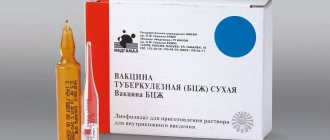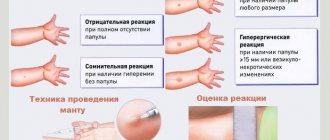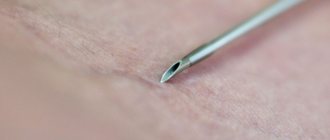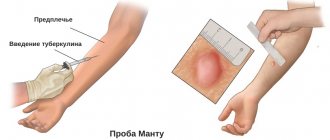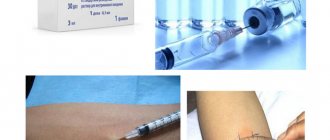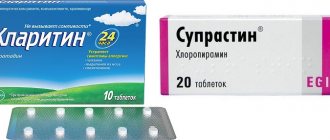The Mantoux tuberculin test is a standard procedure that is performed mainly on children to determine whether they are infected with the tuberculosis bacillus or not. The test consists of injecting a small amount of weakened and killed tuberculosis pathogens intradermally. It is completely painless and takes no more than one minute. After the procedure, the doctor tells you how many days later the Mantoux test should be checked - as a rule, the results of the tuberculin test are assessed on the 3rd day. So that parents do not worry in vain, and also in order to prevent possible complications, it is important to know how and when the Mantoux result is measured and evaluated, what the reaction is on the 1st and 2nd day after the test, what needs to be done for different variants of the result samples.
Test for tuberculosis
With tuberculosis, a strong reaction will certainly begin, which will manifest itself as redness at the site of drug administration, the formation of an infiltrate, and general malaise. But sometimes all these symptoms occur even if the child is completely healthy. At the same time, they can bother you either immediately after the test or on the second or third day.
Important: Before checking, the area should not be combed, heated or overcooled, or lubricated with any alcohol solutions or cosmetics. Inflammation of the wound and its infection make it difficult to evaluate the results and is the basis for a repeat test.
How Mantoux changes by day
After Mantoux, children may experience a variety of symptoms on the first day, or there may be no signs of a reaction at all. Sometimes atypical phenomena are observed only on days 2-3. It all depends on how strong the reaction is, how it manifests itself and how the baby feels. In some cases, it is necessary to show the result to the doctor before the deadline of 72 hours.
Mantoux on the first day
On the first day after Mantoux, the baby is whiny, capricious, refuses to eat, sleeps a lot, or, on the contrary, worries. This is more likely a consequence of nervous stress after a visit to the hospital, rather than a reaction to the drug. But parents must still remain extremely vigilant. If the baby's condition worsens, you should immediately seek medical help.
Mantoux sometimes gives the following reactions on the first day:
- slight redness;
- slight swelling;
- itching
All this is the body’s normal response to tuberculin; by the evening the unpleasant symptoms disappear. It is important not to allow your child to scratch the injection mark. Damage to the skin can lead to inflammation. And this will not only interfere with the correct assessment of the results, but will also greatly harm the entire body. It is forbidden to smear the Mantoux mark with antiallergic ointments and alcohol solutions to reduce itching and redness - it will become even worse, and the results will ultimately be distorted.
Mantoux on the second day
On the 2nd day, Mantu should be moderately reddened and slightly dense, about 1 cm in diameter. When pressed, the papule is painless and turns white. During the day, the boundaries of the compaction become blurred and the redness goes away. By the evening of the 2nd day or the beginning of the 3rd day after the tuberculin test, the irritation from the injection completely disappears and only the true reaction to the injected drug remains.
Mantoux on the third day
Mantu on the third day should be almost invisible. A barely visible trace of Mantoux is considered normal; the speck should not exceed 2 mm in size. A slight bruise is acceptable if the drug was administered by an inexperienced nurse and the injection technique was slightly violated.
Symptoms that indicate a positive or false positive reaction:
- redness more than 5 mm;
- compaction;
- rashes around the injection site;
- severe swelling of the arm and body;
- heat.
Along with external symptoms, the child’s age is assessed. The results of the current sample are compared with last year's. The difference between the sizes of the papule is assessed; the larger the deviation, the more alarming the situation.
Why does the Mantoux vaccine itch and turn red?
Very often parents ask the question, “Why does the Mantoux vaccine itch and itch?”
Often the button starts to itch due to health problems.
- It should be noted that redness and itching after any vaccination is considered normal for the first time, which automatically goes away on its own over a period of time.
However, any redness raises the fear of infection in the brain and gives some people unreasonable panic, regardless of age.
The most problems with diagnosing tuberculosis arise with children.
After all, if older children can already control their behavior after vaccination and not scratch the reddened injection site, which, as a rule, itches and itch, then children, after the test, during redness and swelling of the site from the vaccination, begin to scratch the reddened and enlarged “button” on their arm .
In this case, it is necessary to conduct a preventive conversation with the child so that he knows how to behave after a tuberculin test. Otherwise, children, without knowing it, may distort their assessment of the reaction.
After performing an immunological test - the Mantoux test, a number of certain rules must be followed:
- It is forbidden to wet the vaccination site. Because of this, the papule changes its size, turns red, swells and hurts.
- Do not lubricate the papule with iodine or brilliant green.
- If itching, do not scratch the injection site to avoid infection.
- Do not cover the injection site with a band-aid.
- You should refrain from eating chocolate and citrus fruits for three days.
- It is advisable to wear comfortable clothing so that the sleeve cuffs do not pinch the papule.
All these above points should be followed to avoid misdiagnosis.
A correct diagnosis will help to decide why people experience redness of the skin, bloating and scabies.
The itching caused by the test may cause health problems.
First, you should rule out an allergic reaction or severe sensitivity to the drug “tuberculin”.
Only a TB doctor can make a correct diagnosis after a medical examination.
Many people have Koch bacilli in their bodies in small quantities and in a dormant state.
After the test, this automatically causes redness and swelling of the papule at the first stage, and then suppuration may occur at the injection site.
The degree of individual disease and the number of Koch bacilli in the body will be shown by microbiological culture of sputum taken for analysis.
A good result from examining the chest and lungs is obtained by fluorography or x-ray examination.
After the tests, the TB doctor will either confirm that the number of Koch bacilli has increased many times in the body, and there is a risk of tuberculosis due to bacteria, or determine that the child has a common allergy to the medicine and therefore redness and itching can be considered a negative result of the vaccine.
In the latter case, there is no need to worry or worry about tuberculosis, but allergy treatment should be started.
It is necessary to check the entry in the medical card about the occurrence of allergies to medications and the Mantoux test.
An exemption from vaccinations is recorded in a personal card by an immunologist, phthisiatrician and allergist.
If you have any questions, you should not hesitate to contact your doctor to receive qualified medical care.
On what day should a child’s Mantoux reaction be checked and why?
Important! Mantoux testing in children takes place after 72 hours, preferably not earlier and not later. It is important to adhere to these deadlines in order to obtain the most reliable, undistorted result.
Mantoux is checked after 72 hours, because by this time possible allergic reactions after the test (redness of the skin, slight swelling, hardening at the injection site) have passed, and the doctor has the opportunity to accurately assess whether the body is familiar with tuberculous mycobacteria. If you wait another 1-2 days, then even residual traces of the tuberculin injection may resolve and the doctor will not notice a positive reaction.
How is the Mantoux reaction analyzed?
At the injection site, a swelling forms, popularly called a “button,” which either resolves or increases in size over time.
48-72 hours after administration of the drug, the doctor or specially trained nurse measures the size of the papule with a special ruler, which takes on a rounded appearance and increases in size, and then compares the sizes with established standards:
- 0-1 mm – negative reaction. A person can be calm that he is healthy;
- 2-4 mm is a questionable reaction. In this case, the Mantoux test should be repeated;
- 5 mm – positive reaction. There is a high probability of the presence of the disease, in which case additional examination is required to confirm the diagnosis;
- 17 mm is a sign of disease.
Only the papule itself is measured with a ruler, and not the reddened area of skin on the arm.
A particularly pronounced positive reaction is observed when the diameter of the infiltrate is more than seventeen millimeters with suppuration and necrosis of the skin, which immediately gives grounds to refer the patient to a phthisiatrician.
With a weakened immune system, there is a high chance of contracting tuberculosis, and also directly leads to redness of the papule.
But a red, swollen button does not always prove that the child is sick.
The large size of the seal and reddened skin are the reasons for repeated administration of tuberculin throughout the year.
In this case, you should inform the doctor that the baby has already been given Mantoux.
Automatically repeated tests will differ from normal deviations.
The diameter of a papule is considered positive when it reaches five millimeters or more.
In this case, special monitoring of the child is required for several years.
If the button tends to increase in size in subsequent years, then the phthisiatrician should prescribe treatment.
A questionable reaction is a bulge size of up to 4 mm with redness of the skin around the lump at the injection site.
Then the sample is ordered to be repeated in order to have evidence of the absence of the disease with a small number of bacteria.
The negative reaction reaches one mm, completely clean, not swollen and without reddened skin at the site of vaccination.
Parents are calm, this means that their child is completely healthy.
But redness of the skin near the test, an enlarged “button”, sometimes even suppuration at the vaccination site cause fear and anxiety for all mothers without exception.
But most of all, parents should be wary of the moments where previous tests were doubtful, and then immediately became sharply negative.
This may mean that the patient is more susceptible to tuberculosis, although the disease itself has not yet manifested itself.
But, one way or another, you should not be afraid of vaccinations and refuse them because of reddened skin.
Which reaction requires you to see a doctor sooner?
If after Mantoux the vaccination site becomes very red, covered with blisters, or a large infiltrate appears, you should consult a doctor before three days. It is also a reason to immediately call a doctor if you have the following symptoms:
- increased body temperature;
- headaches and muscle pain;
- weakness, nervousness;
- rash and swelling throughout the body;
- other signs of intoxication of the body.
There's no need to panic. Of course, this may be a signal of the development of active tuberculosis, in which case treatment should be started immediately. But often all these symptoms indicate a violation of the technique of performing the procedure or the use of a low-quality drug. In any case, only the doctor determines further actions. The doctor at the reception or the nurse in the treatment room always warns about how many days after the child needs to check Mantoux. Parents should closely monitor the baby for 72 hours so that he does not scratch the wound, do not injure it while walking, or rub it with clothes. There are actually no contraindications to water hygiene procedures, since the drug is injected under the skin and does not interact with water in any way. But since a child can become overheated or hypothermic during a bath, doctors recommend not bathing him until the results are assessed. Violation of these simple rules can cause distortion of the results: in case of a questionable or false-positive reaction, the doctor will definitely prescribe additional examinations by a phthisiatrician and a repeat tuberculin test a month after the first. The doctor also talks about this when they do Mantoux. If you do not neglect the recommendations, an accurate result will be obtained the first time and no complications will arise.
Reaction to test administration, rules, timing, contraindications
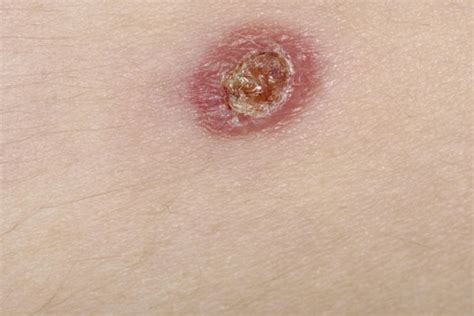
Individuals with a high degree of sensitivity to tuberculin experience fever, malaise, and headache.
You cannot do the test if you have epilepsy, the presence of infectious and skin diseases, allergic and somatic conditions.
Mantoux should also not be given to children along with other vaccinations and injections.
If before this the child managed to receive other vaccinations or was sick and took medications, then you need to wait a month and a half after a complete recovery.
Only then do Mantoux in order to get the correct diagnosis, and not a red button with a false positive reaction.
Until the age of five, children may have a positive reaction to the Mantoux vaccination with large swelling, redness, itching due to the BCG vaccination performed in the maternity hospital and immunity to Koch bacilli (by the age of seven, these symptoms disappear in children).
Leukocytes actively react to the administered medication and receive an allergic reaction with redness at the injection site.
Therefore, phthisiatricians often ask for additional tests to refute a positive Mantoux test in children.
If a positive reaction to the vaccine is detected, treatment should be started immediately.
A person can be registered in the zero group of anti-tuberculosis surveillance for tuberculosis infection if the tests are not too bad, and with critical tests they will offer medical examination in the hospital.
But most of all, parents should be wary of the moments where previous tests were doubtful, and then immediately became sharply negative.
Most likely, the patient is highly susceptible to tuberculosis, although the disease itself has not yet manifested itself.
In this case, you need to check whether the immune system is weakened. This also directly leads to redness of the papule.


